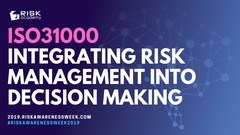Наши популярные онлайн курсы
by Alex Sidorenko, Vladimir Kilinkarov and Alexey Belkov
All of life is the management of risk, not its elimination. Walter Wriston, former chairman and CEO of Citicorp
Any public infrastructure project, and especially a public-private partnership (PPP) project, is a complex project with many different obligations. It weaves together the interests of a wide range of participants: public and private partners, governmental authorities and public organizations, the private partner’s shareholders, banks and other financing entities, contractors, suppliers, operators and insurers, as well as the interests of third parties such as consumers, and public organizations affected by the project in one way or another.
These circumstances predetermine the large number of risks the private and public partners face in implementing a project, including construction and operating risks, tax, financial, market, political, legal, information and other risks.
Many of these risks are manageable and can be prevented or identified at the stage when they can be kept from materializing and resulting in specific adverse consequences such as breach of obligations and, in the worst-case scenario, default on the project. Both the private and the public partner should consider and control these risks. Proper risk management is also an important factor in reaping financial and operating benefits.
This article was prepared by leading international experts on risk management and legal advising in infrastructure and PPP. The article’s objective is to promote modern approaches to risk analysis and risk-oriented decision-making when implementing PPP projects.
What is meant by risks in PPP projects?
Since public-private partnership is an investment project in public infrastructure, in the PPP context the term “risks” pertains to “project risks.” These are understood to mean circumstances which, in the assessment of the parties, may have a negative effect on the benefit they expect to receive with the project.[1] At the same time, in international practice it has recently been proposed to talk about risk not only in a negative, but also in a positive light. In other words, in addition to the above-cited traditional understanding of risk as a negative phenomenon, it is also possible to assess the likelihood of positive circumstances occurring.[2] For example, if a toll road project fits harmoniously into a region’s transportation model, it can be said that there is a risk of more traffic exceeding predictions.
What role do risks and risk allocation play in PPP projects?
Risks, or, more precisely, a special, complex, balanced allocation of risks between the public and private partners according to the principle that “each individual type of risk is assumed by the party able to best manage it” is a key, core feature of PPP enabling this investment mechanism to be delineated from related models such as public procurement, privatization, lease on investment terms and others.[3] It is precisely in this context that infrastructure practitioners, financing parties and PPP development institutions (including the Russian PPP Development Center) and international organizations (UNCITRAL, the ECE, OECD, EU, World Bank and EBRD) use the PPP concept.
Thus, a number of authors propose that PPP should only include long-term contractual arrangements in which there is a common project objective uniting the partners, and the partners share in the products/services, risks, costs and profit.[4] This criterion is used in many national laws and international model legislative provisions in definitions of PPP. In particular, according to Article 2 of the Model Law “On Public-Private Partnership” for CIS member states,[5] public-private partnership is mutually beneficial cooperation of public and private partners that is legally arranged for a fixed term, is based on combining the resources (money and other assets, professional and other knowledge, experience, skills and capabilities) and allocating risks (including risks of financing, construction, ensuring accessibility or demand for the public-private partnership facility or corresponding public services and risks associated with them) to achieve government, municipal and other socially important objectives that are in the public interest and control. And fair allocation of risks, benefits, guarantees and obligations related to the performance of agreements concluded to implement a public-private partnership project between the public and private partners is a principle of PPP (Article 4 of the CIS Model Law).
Considering the importance of allocating risks in PPP projects, risk management issues in such types of projects take on principal importance and become increasingly relevant, which is evidenced by the events on this topic held at national and international forums. For example, a special expert session titled “Risk Management and PPP Project Management: Russian and International Experience” was held on April 25, 2018 as part of the Russian Public-Private Partnership Week Fifth International Infrastructure Congress in Moscow. The panel of experts also featured Russian and international experts on PPP and risk management, representatives of infrastructure companies and public partners, banks, consulting companies and designers.[6]
Why consider risks when implementing major infrastructure projects?
We attempted to answer this question by analyzing some interesting facts:
- More than 12% of money invested is wasted due to poor project management[7]
- On average, current megaproject estimated completion costs were 59% above the initial estimate, an average of US$2.5 billion per project[8]
- One in six IT projects has an average cost overrun of 200% and a schedule overrun of 70%, and 18% of projects fail[9]
- 31% of high-rise and 33% of power generation projects finish more than three months late[10]
This list is far from complete, but it is quite impressive. It at least gives one pause.
It is even more interesting to try to figure out the primary causes of why major projects fail. A recent study by KPMG will help us in this. The study describes the main reasons why major projects are unsuccessful:
- Schedule overrun and considerable cost overrun due to changing design solutions (redesign, using new technology solutions, etc.)
- Significant increase in the project budget due to poor budgeting
- Delayed implementation (completion) of the project, budget increase attributable to additional unforeseen costs because the complexity of the project was underestimated due to the facility’s location and accessibility
- Budget increase and project schedule overrun due to change in the cost of materials and equipment and attempts to quickly resolve the problem
- Schedule overrun due to overestimated personnel qualifications
- Schedule and cost overrun due to the contractor using inefficient technologies
- Schedule and cost overrun due to the contractor using poor-quality equipment
These statistics show that the above listed causes mainly have a negative impact on the timing (schedule) and cost (budget) of a project.
Let’s take a closer look at project schedule-related issues. Almost as soon the project starts to be implemented, the pre-agreed master schedule starts to undergo changes and becomes out of date. Based on our experience of implementing major projects in Russia and abroad, the planning confidence interval in a three- to five-year project is around one month from the current date. It is precisely this period (and the sequences and scopes of work corresponding to it) that the project team sticks to with a more or less high degree of control and confidence. More far-off planning time-frames are approximate and may change considerably while work is being done or if it is disrupted in the planning confidence interval.
If the confidence interval is one month, then what are the odds that all of the planned work in the project’s control milestone (let’s say six months from the current date) will be completed by the dates in the master schedule? The level of uncertainty when implementing major infrastructure projects is extremely high. High uncertainty means high risks.
Are risk analysis and management required by law?
Studying international experience, the experience of countries where these practices have already been used for decades, plays an important role in understanding modern tools for PPP risk analysis and management. The most vivid example could be that of New Zealand, where the government will not even consider applications for participation in a PPP unless a comprehensive quantitative risk analysis has been done and the project schedule and budget take into account risk modeling.[11]
A number of countries do financial risk assessment to justify the choice of PPP as the form of implementing an infrastructure project, establishing a comparative advantage of the PPP project over a similar project being implemented without involving a private investor, in other words, according to the public procurement model. The best-known methods are VFM (value for money) and PSC (public sector corporator),[12] which are used in many countries. Such jurisdictions as the United Kingdom, France, India, Australia, South Africa, Latin American countries (Chile, Colombia, Peru), US and Canadian states and others have highly developed methods and extensive practice of using them in preparing PPP projects.[13]
These methods are quite utilitarian and are intended not so much to determine project performance as a whole and set the key tasks for subsequent risk and project management, as to determine whether there are advantages to using the PPP model to implement the project as compared to traditional public procurement. For example, value for money means achieving the optimal combination of benefits and costs of implementing the project. Many PPP programs require an assessment of whether a PPP is likely to offer better value for the public in terms of fiscal cost than traditional public procurement—often called value for money analysis.[14] The PSC model is typically the best estimate of the capital cost and lifetime operations and maintenance cost of implementing the project under public procurement. These estimates are typically done with risk adjustment, in other words, considering that the PPP transfers more risks to the private party. To make a fair comparison of the PPP and public procurement models, these risks must be identified and assessed, and the PSC should also consider the cost of these risks.[15]
Some countries try to develop these models to compare PPP with standard public procurement. To put an example, Russia has also recently developed methods for assessing performance and determining the comparative advantage of a public-private partnership project over a public procurement project. These methods were approved by the Ministry of Economic Development of Russia.[16] They involve first determining the financial performance and socioeconomic effect of implementing it, and, second, determining whether there is a comparative advantage to the PPP project, which is carried out based on a correlation of the net present value of Russian Federation budget funds during project implementation and the net present value in the implementation of a state or municipal contract (PBV, present budget value), and the public partner’s scope of obligations in the event of risks in implementing the project and the scope of obligations by that public-law entity in implementing a public or municipal contract (PRV, present risk value). Thus, in addition to budget cost, this mechanism purports to identify and do a financial estimate of the risks of PPP projects and public procurement. If this analysis results in a discovery that the PPP project will be more expensive than public procurement of the corresponding goods, work and services, considering the costs and risks for the state, then such an adverse finding will mean not pursuing the PPP project even if there is no money for public procurement. Thus, we see that the above models have little in common with risk management in its traditional and practical understanding.
The traditional approach to risk management in PPP projects and other infrastructure projects
The World Bank names three main stages of working with risks in PPP projects: risk identification, risk allocation and mitigation, and risk monitoring and review.[17]
Risk identification is a comprehensive exercise concerning matters and contingent events that are both internal and external to the project itself; it involves analyzing all phases of the project, notably project preparation, setting up of the project vehicle, financing, design, construction and operation, together with risks associated with assets and services that may be transferred into the project. Risk workshops may be created and checklists of risks or risk registers may be used. These will usually list the nature of the risk, its probability of occurring, and its expected impact on the project, as well as the measures that can be taken to mitigate those risks. It is also noted that advisers can play an important role in this process[18].
Risk allocation involves allocating a risk or responsibility for dealing with the consequences of the risk to one of the parties to the contract or sharing the risk and consequences of each risk between the parties as specified in the PPP contract. The key principle is to allocate the risk to the party best able to control its occurrence or manage its consequences as well as to the party in the best position to assess the likelihood of the risk arising.[19] This approach is fairly criticized for being circular and to vague. To specify it, it has been proposed to use a test that comes down the need to determine which party has the ability to: 1) influence the corresponding risk factor; 2) influence the sensitivity of total project value to this corresponding risk factor; 3) absorb the risk.[20]
A project’s bankability depends on correct risk allocation. It helps to identify the list of issues and problems that the parties (and primarily the public authority) should resolve before entering into the project and executing the PPP contract. During this stage, a risk matrix is usually prepared, in conjunction with the risk register, and indicates the party to which the risk and the consequences of the risk are allocated.
The result of risk allocation and risk control and mitigation mechanisms are set forth in the PPP contract in the form of specific obligations of the parties and consequences for the parties of one or another circumstance occurring. Some risks can be shifted to insurance companies and other specialist market players.
Risk mitigation helps to make risks more manageable, to prevent them from occurring or to reduce the impact of the consequences of the risk. Obligations to control risks and take action to mitigate them are also frequently included in the PPP contract either in the form of general obligations or in the form of specific obligations to take one or another preventive action. It should also be noted that there are mechanisms to compensate for risk. Their purpose is to compensate for the consequences of one or another event occurring. Such mechanisms can include various types of insurance (insurance of liability for breach of contract, third-party liability, property insurance), and, for example, various types of agreements and contractual terms intended to protect the interests of one or another participant in the PPP project. For example, an express agreement and options for financing entities are intended to compensate for the negative consequences of project default and enable a financing entity to seamlessly exit the project.
Risk monitoring and review is an ongoing process that continues throughout the life of the project. Each party should constantly monitor all project risks, including those that have been allocated to third parties, to avoid default and other negative consequences. The project team will usually manage this process and will update the risk management plan, register of risks and risk matrix regularly.[21]
What’s the matter with traditional project planning and management in PPP projects and other infrastructure projects?
Basic plans are usually built on deterministic assessments of how long it will take to complete tasks. Data are provided by outside experts. Less often, statistics and acquired experience are analyzed, but this doesn’t always apply. And the “most likely mode” is the most common assessment of how long work will take. In other words, the value the outside expert has most frequently seen in practice. However, in real life, in most cases that are more than 50% likely the value of the mode is exceeded. Therefore, using the mode to assess the duration of work in a project schedule results in systematically underestimating the duration of the project: ignoring possible risks, incorrect planning and distortion of results. The same can be said of the budget for infrastructure projects. In most cases the project budgeting and scheduling methodology consistently underestimates the risks, which means the partners cannot make adequate decisions on the project.
Other reasons why traditional project planning is ineffective are the cumulative effect and ignoring correlations between tasks (logical rules and links arising between scheduled tasks or budget components). Master plans do not include less likely events which:
- Could increase the scope of tasks (could affect, independently and unconnectedly, an entire series of repeated tasks, for example, welding when connecting equipment)
- Could increase or decrease productivity of available project resources (for example, choosing a less competent contractor)
- Could require that unplanned extra work be done (for example, the need to re-permit work due to a change in the project)
- Could entirely stop the project (for example, bad weather, strike, work stoppage due to violation of occupational health and safety, fire safety or environmental protection regulations)
All of this makes schedules and budgets for public-private partnership projects very imprecise, inefficient and often unrealistic. Experienced planning managers and specialists factor in “margins of safety,” but even this is not always effective, correct or justified.
In recent years, researchers from the US, Canada, Europe and Australia[22] have done numerous studies that show how ineffective this approach is and identify serious misinformation in decision-making. Plus, very often the prepared risk matrices and recommendations on how to mitigate risks and compensate for their possible consequences remain on paper, are considered only when preparing the PPP project and are not later used in project management at the implementation stage.
The following, in particular, needs to be done:
- Integrate risk analysis into decision-making on whether to implement a PPP project and build that analysis into project planning and budgeting; risks cannot be worked with separately and in a formalistic way, as is often done.
- Use modern quantitative risk analysis tools; and it is not recommended to use many outdated and clearly inefficient risk management tools, such as risk matrices.[23]
- Reduce the mental traps and risks in project implementation and project risk monitoring.
- Use risk management tools in management decision-making when implementing a PPP project.
Together with Alexey Belkov, an international expert on risk analysis for major infrastructure projects, we have formulated and present here a step-by-step guide to analyzing and considering risk information when planning a PPP:
Step 1. Collection and analysis of information about risks, and analysis of assumptions
In order to create a budget and project schedule for a PPP project, it is necessary to identify risks and analyze all significant assumptions made by management. The first step includes the following basic tasks:
- Identify which factors in the project model most impact timeline and budget and analyze which risks affect these factors. This is usually done using sensitivity analysis.
- Identify risks increasing the duration and cost of accomplishing tasks.
- Identify risks making it necessary to do extra work.
- Identify risks of work stoppage that prevent a group of tasks from being finished.
The ranges of possible values should be determined for the risks identified and basic assumptions made by management, or a description should be done of how the risk will impact the project schedule or budget. The first step should result in a list of risks with a detailed description of each risk event and agreed assessments of the impact of each risk on key project indicators. It is also necessary to collect information about the cost and time to complete actions to eliminate and/or mitigate risks or compensate for their consequences.
When identifying risks, it is important to reduce the possible influence of mental traps by either using a specially trained process facilitator, or by calibrating experts who are involved in the risk identification process. There is currently a large number of available tools and methods that enable a team/project participants to identify risks and limit the influence of mental traps/factors on the process of identifying and assessing risks. For example, the Institute for Strategic Risk Analysis (ISAR DPO autonomous non-profit organization) has a separate training program and package of training sessions for specialists of various levels and branches of industry training them in how to identify and reduce the influence of mental traps on risk assessment and the process of risk-oriented decision-making.
Step 2. Revision of the project schedule/budget before doing modeling
A full-fledged audit of the project schedule or budget needs to be done before starting to assess risks. The following is to be done, at a minimum:
- Get rid of constraints such as “start work not before date” and/or “finish work not later than date,” etc. Having such constraints hinders robust modeling, limiting the ranges of deviations in finish times of a task and group of tasks under the influence of risks and uncertainties.
- Weed out “pending tasks” that don’t have “predecessors” and/or “successors.” A good scheduler knows that a schedule should not have any tasks that start from nowhere and/or end nowhere. Having such tasks derails efforts to target risks and do subsequent modeling.
- Prepare entry points (milestones) for potential extra work/tasks (this applies in some software for modeling project schedule risks). Sometimes risk analysis results in the understanding that extra work is likely to arise. To this end, milestones can/should be factored into a risk model. Milestones are tasks with zero duration that could arise and increase the entire project duration. For example, if we analyze a standard work sequence of project preparation – project approval – start of work on the project, then it is quite obvious that at the project approval/expert review stage risks could arise that will make it necessary to redesign and adjust the project and then go through expert review again. It is in this case that it will be relevant to factor in entry points (milestones), or work with zero duration that will make it possible to model likely extra work at the modeling stage.
- Avoid negative lags, links to summary tasks, long lags and task durations. Such recommendations are valid both when scheduling and when using schedules for risk models. These conditions distort modeling results. Assigning risks to such task/group of tasks yields incorrect (distorted) modeling results in one case and/or does not yield any result in other cases.
- Check the logic of the schedule, especially in terms of start-to-start (SS), finish-to-finish (FF) or start-to-finish (SF) task links. In most cases a specialist in risk modeling for a project schedule will receive a report of such links at the stage of importing the schedule into the specialized software. Series of work with “nontraditional” links, such as SF, could also operate incorrectly in the modeling process, distorting the results. The best advice in this case will be for the risk manager to prepare a schedule for subsequent modeling together with the planning specialist. This exercise is also very useful for perfecting the discipline of quality project scheduling.
Specialized software is needed to complete the stage. There are both paid and free solutions, such as Vose Tamara, on the market.
Step 3. Modeling
Once the project budget or schedule has been prepared for risk modeling and the risks have been identified and documented, it is necessary to:
- Define the list of output/total parameters for which you want to receive risk analysis results, for example, fund balance, budget, key milestones, or others.
- Determine the number of iterations for risk modeling.
- Launch a simulation that will make it possible to assess the impact of risks on project timing or budget, and download the results of risk analysis.
It is desirable to explain how the simulation process occurs, which software is used, which data they use other than those mentioned above, where the data are obtained, how much they consider country specifics and data on national economies, the particular features of a specific national industry market and statistics on that market.
Step 4. Analysis/interpretation of modeling results
This is perhaps the most important stage of risk analysis. The results obtained from risk analysis need to be correctly interpreted in order to then make decisions on the PPP project. As a result, project participants receive the following information:
- The overall likelihood of successful project implementation
- The likelihood of the project being completed on time and within budget
- The likelihood of achieving each key project milestone
- The most likely date of project completion
- The range of possible delay or budget overrun
- The ranges of key project parameters
- A prioritization of risks that most impact the project
- Risks that need to be added to the PPP contract and other project documents
- The budget that needs to be allocated to mitigate the most significant risks
- The list of most critical work requiring special attention, control and reinforcement
- The allocation of risks between partners
Thus, risk analysis will enable both the private and public partner and other project participants to:
- Determine the range of a fair project budget considering risks
- Determine the most significant risks that need to be set forth in the PPP contract and other project documents and which of the participants should be responsible for those risks
- Validate the assumptions made by the partners in preparing the project
As stated above, risk management does not end with the planning, preparation of the project and execution of the PPP contract. Any PPP project needs a single and reliable method of monitoring the project’s progress and corresponding project risks. Both the private and the public partner need this method, and it is specific for each of the parties, because there are differences and special considerations in the risks each of the parties to the PPP contract is exposed to.
The necessary set of documents is developed and negotiated in accordance with the regulator’s requirements (state standards, legislative requirements[24] or foreign partners’ requirements): the rules, standards, supplements to job descriptions, register of risks (impacting the PPP’s strategic objectives), and a determination of the company’s risk appetite.
Absolutely all project participants must be involved in risk management or, more precisely, decision-making and managing PPP projects considering risks. There is no such thing as significant and/or insignificant risk. Especially when risks are assessed at the qualitative level, intuitively apart from assessment (modeling) of how the risk will impact project timing and budget. An expert assessment of potential risk is good, but without a specific assessment of how the risk impacts specific tasks/a group of tasks, item/a group of items in the budget, it is bad or, more precisely, ineffective.
If risk management in a PPP project is a perfunctory discipline or is done optionally, the reasons should be sought in the project itself, in the Contracting Authority or Contractors. In today’s realities, the budgetary constraints are quite harsh, especially when talking about infrastructure projects. There is almost no opportunity to “throw” investment at unperceived risks. Nor is it possible to hold larger contingency reserves in the form of frozen investments or large loans. Such a tactic could considerably diminish the performance indicators of projects being implemented or result in their failure.
To conclude this article and to summarize, we would like to note that it would probably be correct to word the final question not as “how should risk management be organized?” but as “how should the process of evaluating, planning and controlling the implementation of PPP projects be organized?” And there can only be one answer: “risk oriented, considering the risks and uncertainties, constantly monitoring the project implementation trend: are we on time and are we within budget, or have delays and failures occurred?”
[1] United Nations Commission on International Trade Law. Public-private partnerships (PPPs): Proposed updates to the UNCITRAL Legislative Guide on Privately Financed Infrastructure Projects (revised chapters I and II). P. 24. https://undocs.org/en/A/CN.9/982/Add.2
[2] See: Timothy C. Irwin. Government Guarantees Allocating and Valuing Risk in Privately Financed Infrastructure. 2007. P 49. Nevitt and Fabozzi define risk as “instability; uncertainty about the future; more specifically, the degree of uncertainty involved with a loan or investment.” (Nevitt, Peter K., and Frank J. Fabozzi. 2000. Project Finance. 7th ed. London: Euromoney Books. P. 428).
[3] See, e.g.: Bazhenov, A.V. Use of the Public-Private Partnership Mechanism as a Catalyst of Anti-Crisis Potential for Developing Infrastructure. In Public-Private Partnership: Ways of Improving the Legislative Framework. A.A. Zvereva (ed.). Moscow, 2009. P. 25 (in Russian).
[4] Klijn E.-H. and Teisman G.R. Governing public-private partnerships. Analysing and managing the processes and institutional characteristics of public-private partnerships in S.P. Osborne (ed.) Public-Private Partnerships. Theory and practice in international perspective. London, 2000. P. 85; Public-Private Partnership in Russia and Foreign Countries: Legal Aspects. V.F. Popondopulo and N.A. Sheveleva (ed.). Moscow, 2015. P. (in Russian); Belitskaya, A.V. Legal Definition of Public-Private Partnership. In Zakonodatel’stvo. 2009. No. 8. P. 42 (in Russian).
[5] Adopted in St. Petersburg on November 28, 2014 by Resolution 41-9 at the 41st plenary session of the Interparliamentary Assembly of CIS Member States.
[6] For more detail, see: http://www.p3week.ru/forum-2018/programma/den-2.
[7] https://www.pmi.org/-/media/pmi/documents/public/pdf/learning/thought-leadership/pulse/pulse-of-the-profession-2016.pdf
[8] https://www.offshoreenergytoday.com/ey-oil-gas-megaprojects-exceed-budgets-cost-overruns-at-500b/
[9] https://www.wrike.com/blog/complete-collection-project-management-statistics-2015/
[10] http://www.globalconstructionreview.com/perspectives/centurys-most-troublesome-construction-pr8oje8ct8s/
[11] See: the New Zealand Treasury’s Public Sector Comparator and Quantitative Assessment https://treasury.govt.nz/sites/default/files/2015-10/ppp-public-sector-comparator-sep15.pdf
[12] PPP Reference Guide – Version 3, International Bank for Reconstruction and Development. Washington, DC: World Bank. 2017. https://library.pppknowledgelab.org/documents/4699/download. P. 129-132.
[13] Value-for-Money Analysis Practices and Challenges: How Governments Choose When to Use PPP to Deliver Public
Infrastructures and Services. Washington, DC: World Bank. 2013. P. 23–28.
[14] Ibid., and Public-Private Partnerships: In Pursuit of Risk Sharing and Value for Money. Paris: Organisation for Economic Co-operation and Development. 2008. P. 71–72.
[15] PPP Reference Guide – Version 3, International Bank for Reconstruction and Development. Washington, DC: World Bank. 2017. P. 131; National Public Private Partnership Guidelines – Volume 7: Commercial Principles for Economic Infrastructure. Canberra: Australian Government, Department of Infrastructure and Regional Development. Section 2.3.
[16] Ministry of Economic Development of Russia Order No. 894 of November 30, 2015, “On Approval of the Methods for Evaluating the Performance of a Public-Private Partnership Project and/or a Municipal-Private Partnership Project and Determining Their Comparative Advantage.”
[17] Edward Farquharson Clemencia Torres de Mästle and E.R. Yescombe with Javier Encinas. The World Bank. How to Engage with the Private Sector in Public-Private Partnerships in Emerging Markets. Washington. 2011, pp. 38-40.
[18] Ibid. P. 38.
[19] Ibid.
[20] Timothy C. Irwin. Government Guarantees Allocating and Valuing Risk in Privately Financed Infrastructure. 2007. P. 56.
[21] See: Edward Farquharson Clemencia Torres de Mästle and E.R. Yescombe with Javier Encinas. The World Bank. How to Engage with the Private Sector in Public-Private Partnerships in Emerging Markets. Washington. 2011, p. 38-40.
[22] See: https://riskacademy.blog/2017/01/14/my-favourite-risk-management-books/
[23] See: https://www.researchgate.net/publication/266666768_The_Risk_of_Using_Risk_Matrices
[24] See, for example, the requirements to risk management, internal control and internal audit in a public company established in Russia by Federal Law No. 209-FZ of July 19, 2018 “On Amending the Federal Law ‘On Joint Stock Companies.’”
Check out other decision making books
RISK-ACADEMY offers online courses

+ Buy now
Informed Risk Taking
Learn 15 practical steps on integrating risk management into decision making, business processes, organizational culture and other activities!
19,999,99

+ Buy now
ISO31000 Integrating Risk Management
Alex Sidorenko, known for his risk management blog http://www.riskacademy.blog, has created a 25-step program to integrate risk management into decision making, core business processes and the overall culture of the organization.
199,999,99

+ Buy now
Управление рисками
В этом коротком и очень увлекательном курсе, Алексей Сидоренко расскажет о причинах внедрения риск менеджмента, об особенностях принятия управленческих решений в ситуации неопределенности и изменениях в новом стандарте ИСО 31000:2018.
19,999,99
































